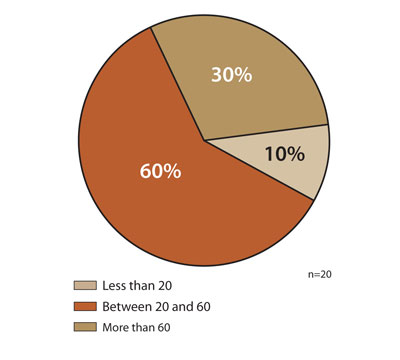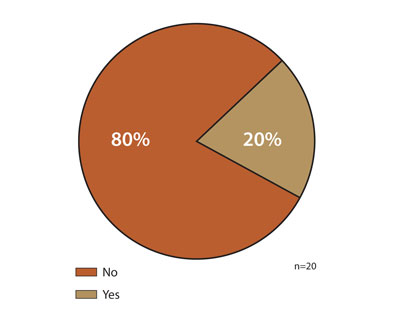OSN Retina 150 Survey
How many intravitreal injections do you give in a typical week?
![]()
More than 60. Anti-VEGF therapy has opened so many avenues that benefit patients with AMD, vascular occlusions, and diabetic retinopathy. It has become the primary therapy for many of these conditions. In addition, Avastin (bevacizumab, Genentech) as well as patient access programs for both Lucentis (ranibizumab, Genentech) and Eylea (aflibercept, Regeneron) provide that no patient goes without access to treatment.

John W. Kitchens
The real challenge with these therapies is not the burden of injections but the burden of treatment decisions to be made. Performing an individual exam, OCT and frequent angiography can create an overwhelming situation clinically, not to mention the effect on health care costs. At the same time this must be balanced with providing wise treatment decisions for non-responders, identifying those whose disease may benefit from adjuvant therapies, and determining appropriate treatment intervals to maximize individual outcomes with minimized patient inconvenience and risk.

Certainly there is a burden to these remarkable therapies, but the burden is a good one to have because patient outcomes are at a level not experienced by other specialties in medicine. The subtle differences between good and great outcomes are now in the details surrounding the treatment decisions.
– John W. Kitchens, MD
Disclosure: Kitchens is a speaker and consultant for Genentech and Regeneron.
Do you feel that giving injections is overwhelming your time in the clinic?
![]()
There has been a paradigm shift in the way we practice retina over the past few years. As more anti-VEGF drugs and injectables are approved, there are more options available for our patients. We are shifting away from more conventional therapies, older therapies such as laser, to doing more injections. As a result, we’ve had to change the way we do things in terms of being more efficient regarding testing and processing patients. But it’s not overwhelming; it is the shape of the way the technology has evolved, and we’ve had to change to accommodate that technology.


Michael Singer
In our infrastructure, we have had to buy more imaging technology and hire more staff to process more patients seen in a given period of time as the same people return month in and month out. That’s become more of a drain on our practice than giving injections themselves, but we are adapting to it. We just have to make appropriate shifts to service the patient population, but that would happen anyway. Even if we didn’t have these technologies, we would be seeing more patients over time anyway as the population is getting older.
– Michael Singer, MD
Disclosure: Singer consults for Allergan, Genentech and Regeneron.
